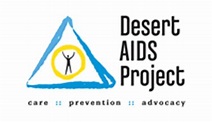May is National Asthma and Allergy Awareness Month as recognized by the Asthma and Allergy Foundation of America. In the midst of spring, there is now widespread blooming across the Valley. As such, some consideration of asthma and allergies is a timely discussion. In this Press Release, we provide information pertaining to allergy and asthma triggers, as well as local Coachella Valley statistics.
The uncomfortable reaction from allergies are a common complaint, particularly during the spring season. It is estimated that roughly 50 million Americans suffer from allergies each year, according to the Centers for Disease Control and Prevention. While less common, there remain a high number of people who suffer from asthma. According to HARC’s 2016 data, about 10.9% (33,368) of Coachella Valley adults, and 13.7% (13,536) of Coachella Valley children report having asthma. Asthma and allergies are often discussed together because the two illnesses are related. Allergies, for many people, can cause an asthma attack. As such, both allergies and asthma are described in what follows.
What are Allergies?
Allergies come in many different forms, with the most common allergic diseases including: hay fever, asthma, conjunctivitis, hives, eczema, dermatitis, and sinusitis. In fact, allergies are the sixth leading cause of chronic diseases in the United States, with a total annual cost of more than $18 billion.
Once triggered, allergies can cause a range of reactions including minor disturbances such as sneezing and itching, all the way to life-threatening conditions. Unfortunately, allergies cannot be prevented; however, allergic reactions can be. For example, being in an air-conditioned environment, cleaning to remove dust mites and animal dander, avoiding certain foods, and taking medication to counteract allergic reactions can help prevent a reaction.
What is Asthma?
Asthma is a disease specific to the lungs that causes wheezing, breathlessness, chest tightness, and coughing. These symptoms are experienced during an asthma attack, in which the body’s airways become smaller. Interestingly, some people are born with asthma, however asthma can develop at any point throughout one’s life. Unfortunately, there is no cure for asthma, but the condition can be controlled by taking appropriate medications, monitoring your triggers, and listening to your physician.
Medicine taken for asthma generally comes in two forms; (1) medicine to counteract symptoms of an attack (quick-relief), or (2) medicine to decrease the frequency and intensity of future attacks (long-term control). The causes of asthma attacks vary from person to person, so if you have asthma, it’s important to monitor your asthma attacks to identify what are the specific triggers. Some common triggers include tobacco smoke, dust mites, outdoor air pollution, pets, mold, and fire smoke. It is a good idea to have a written ‘action plan’ for asthma that you develop with your physician. This includes having a daily protocol for medicine to take, how to take long-term approaches to managing asthma, how to alleviate attacks, and understanding when to go to the emergency room.
It is important to monitor both allergies and asthma. Everyone should make efforts to determine the causes of your allergy or allergies, and the triggers for your asthma attacks. With the spring season just at the beginning, now is the time to get control of your breathing for optimal well-being.
To see more statistics regarding health information in the Coachella Valley, you can visit: http://survey.HARCdata.org
To schedule an interview with Dr. Jenna LeComte-Hinely call 760.404.1945 or email Jlecomte-hinely@HARCdata.org.



















